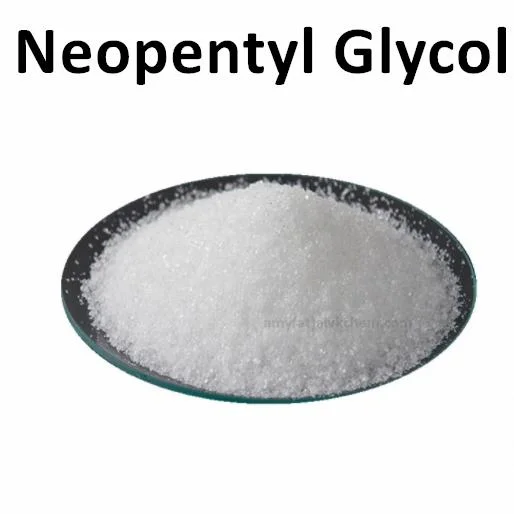Giới thiệu

Trong lĩnh vực giải pháp quản lý nhiệt, chất làm mát neopentyl glycol nổi bật như một lựa chọn linh hoạt và hiệu quả. Hướng dẫn toàn diện này nhằm mục đích đi sâu vào các đặc tính, ứng dụng, ưu điểm và những điều cần cân nhắc về chất làm mát neopentyl glycol, cung cấp những hiểu biết sâu sắc có giá trị cho các kỹ sư, nhà nghiên cứu cũng như những người đam mê.
Understanding Neopentyl Glycol Coolant
Neopentyl glycol coolant, often abbreviated as NPG coolant, is a type of heat transfer fluid renowned for its exceptional thermal conductivity and stability. Derived from neopentyl glycol, a compound with four methyl groups attached to a central carbon atom, this coolant exhibits unique characteristics that make it ideal for various thermal management applications.
| Tài sản | Sự miêu tả |
|---|---|
| Thermal Conductivity | Exceptionally high thermal conductivity, facilitating efficient heat transfer. |
| Sự ổn định | Demonstrates excellent stability, resisting degradation even under harsh conditions. |
| Chemical Composition | Derived from neopentyl glycol, featuring a structure with four methyl groups attached to a central carbon atom. |
| Tính linh hoạt | Suitable for diverse thermal management applications across different industries. |
| Độc tính | Low toxicity, making it safe for handling and environmentally friendly. |
Properties of Neopentyl Glycol Coolant
Neopentyl glycol coolant, commonly known as NPG coolant, possesses a range of distinctive properties that contribute to its effectiveness in thermal management applications. Understanding these properties is crucial for appreciating the utility of NPG coolant in various industries. Here’s a detailed exploration of its key properties:
Thermal Conductivity:Neopentyl glycol coolant is celebrated for its exceptional thermal conductivity, which allows it to efficiently transfer heat across systems. With high thermal conductivity, NPG coolant facilitates rapid heat dissipation, contributing to enhanced performance and reliability in thermal management applications.
Sự ổn định:One of the standout features of neopentyl glycol coolant is its remarkable stability. Even under challenging operating conditions, NPG coolant maintains its chemical integrity, resisting degradation and ensuring long-term performance. This stability is essential for maintaining consistent thermal management effectiveness over extended periods.
Chemical Composition:Derived from neopentyl glycol, NPG coolant boasts a unique chemical composition characterized by a central carbon atom bonded to four methyl groups. This molecular structure contributes to the coolant’s exceptional properties, including its high thermal conductivity and stability.
Tính linh hoạt:Neopentyl glycol coolant exhibits remarkable versatility, making it suitable for a wide range of thermal management applications across diverse industries. From automotive cooling systems to electronics and industrial processes, NPG coolant can effectively address heat transfer challenges in various environments.
Applications of Neopentyl Glycol Coolant
The versatility of neopentyl glycol coolant lends itself to numerous applications across different industries, including:
Automotive Cooling Systems:In the automotive sector, neopentyl glycol coolant serves as a vital component in engine cooling systems. Its high thermal conductivity allows for efficient heat dissipation, helping to regulate engine temperature and prevent overheating. NPG coolant also offers stability under the demanding conditions encountered in automotive engines, ensuring reliable performance and durability.
Electronics Cooling:With the increasing complexity and miniaturization of electronic devices, effective thermal management is crucial to maintain optimal performance and prolong component lifespan. Neopentyl glycol coolant is utilized in electronics cooling applications to dissipate heat generated by semiconductor devices, circuit boards, and other electronic components. Its ability to transfer heat efficiently helps prevent thermal runaway and ensures the reliable operation of electronic systems.
Industrial Processes:In industrial settings, maintaining precise temperature control is essential for optimizing manufacturing processes and product quality. NPG coolant is employed in various industrial applications such as heat exchangers, cooling towers, and hydraulic systems to regulate temperatures and remove excess heat generated during production processes. Its stability and compatibility with industrial materials make it a preferred choice for critical thermal management tasks in industries ranging from chemical processing to metal fabrication.
Advantages of Neopentyl Glycol Coolant
The utilization of neopentyl glycol coolant offers several distinct advantages, such as:
Enhanced Thermal Performance: With its high thermal conductivity, NPG coolant facilitates efficient heat dissipation, contributing to improved thermal management.
Chemical Stability: Neopentyl glycol coolant exhibits excellent stability, resisting degradation even under harsh operating conditions, thereby prolonging system lifespan.
khả năng tương thích: This coolant is compatible with various materials commonly used in cooling systems, minimizing the risk of corrosion or damage to system components.
Environmental Friendliness: Neopentyl glycol coolant is non-toxic and biodegradable, aligning with environmentally conscious practices.
Considerations When Using Neopentyl Glycol Coolant

While neopentyl glycol coolant offers numerous benefits, it’s essential to consider certain factors when incorporating it into thermal management systems:
Material Compatibility: Although generally compatible, it’s crucial to ensure compatibility with specific materials used in the system to prevent adverse reactions.
Contamination Risk: Proper handling and storage are necessary to minimize the risk of contamination, which could compromise the coolant’s performance.
Temperature Limits: While NPG coolant has a broad operating temperature range, exceeding its limits may affect its effectiveness and longevity.
Sự kết luận
Neopentyl glycol coolant emerges as a compelling option for addressing thermal management challenges across various industries. Its exceptional properties, coupled with numerous advantages, position it as a reliable and efficient heat transfer fluid. By understanding its characteristics and considerations, engineers and designers can leverage NPG coolant to enhance the performance and reliability of their thermal management systems.
Câu hỏi thường gặp
Is neopentyl glycol coolant suitable for high-temperature applications?
Neopentyl glycol coolant exhibits a wide operating temperature range, making it suitable for both low and high-temperature applications. However, it’s essential to ensure that the specific application falls within the recommended temperature limits to optimize performance.
How does neopentyl glycol coolant compare to other types of heat transfer fluids?
Compared to traditional coolants like water or ethylene glycol, neopentyl glycol coolant offers superior thermal conductivity and chemical stability. Additionally, its low toxicity and environmental friendliness make it a preferred choice for certain applications.
Can neopentyl glycol coolant be mixed with other fluids?
While mixing neopentyl glycol coolant with other fluids may be possible, it’s advisable to consult the manufacturer’s recommendations to ensure compatibility and prevent adverse effects on performance.
What precautions should be taken when handling neopentyl glycol coolant?
When handling neopentyl glycol coolant, it’s essential to wear appropriate personal protective equipment and follow proper storage and disposal procedures to minimize the risk of contamination and ensure safety.


